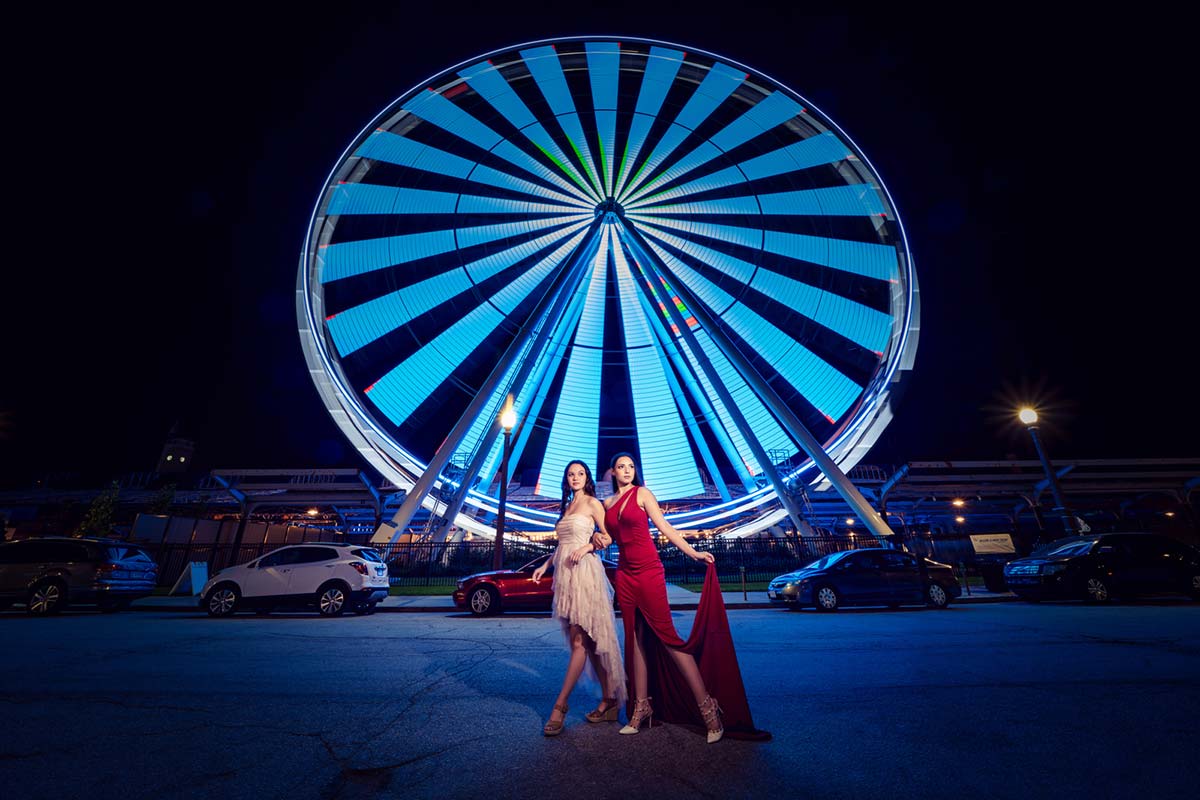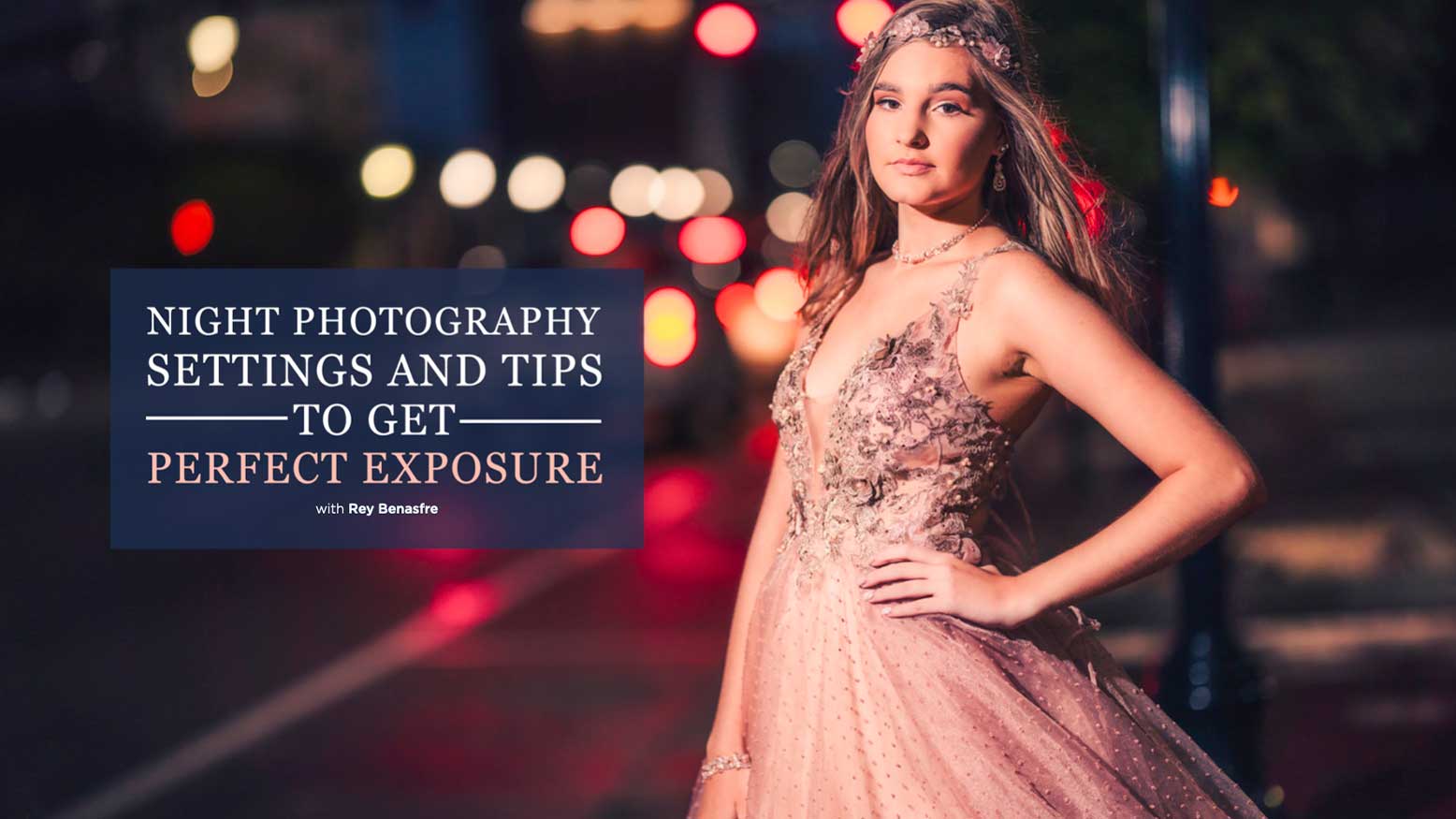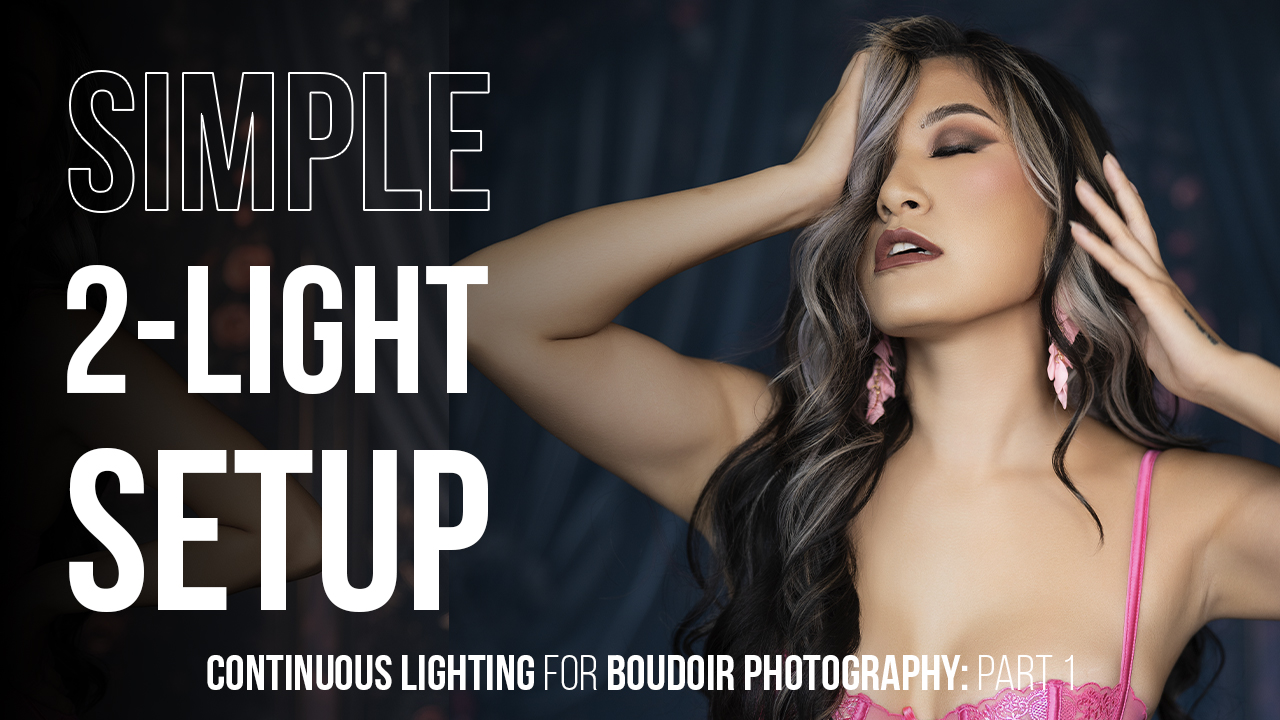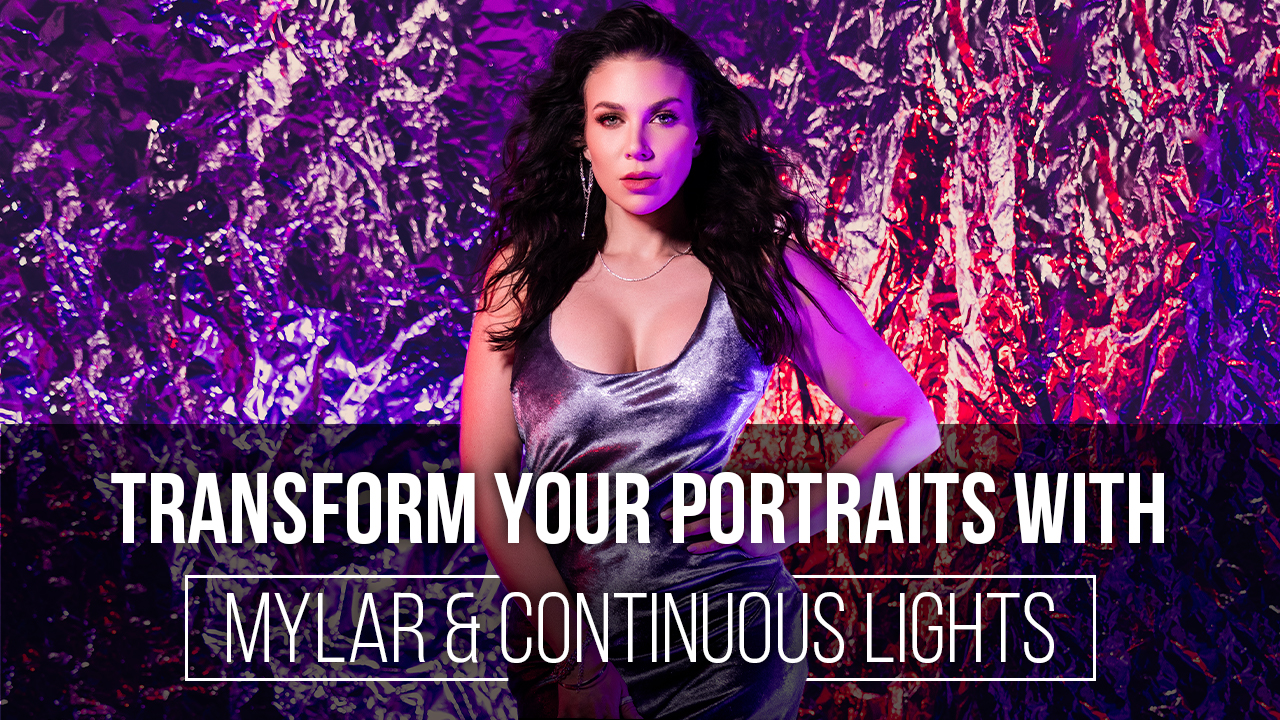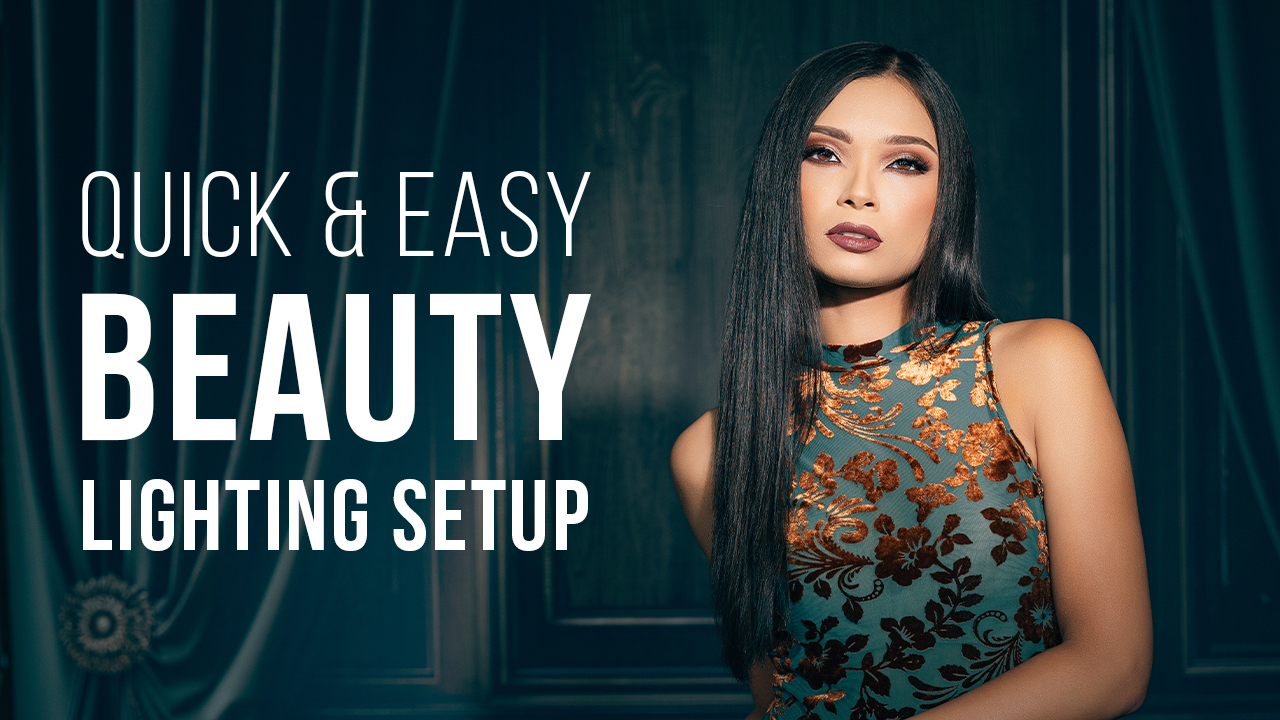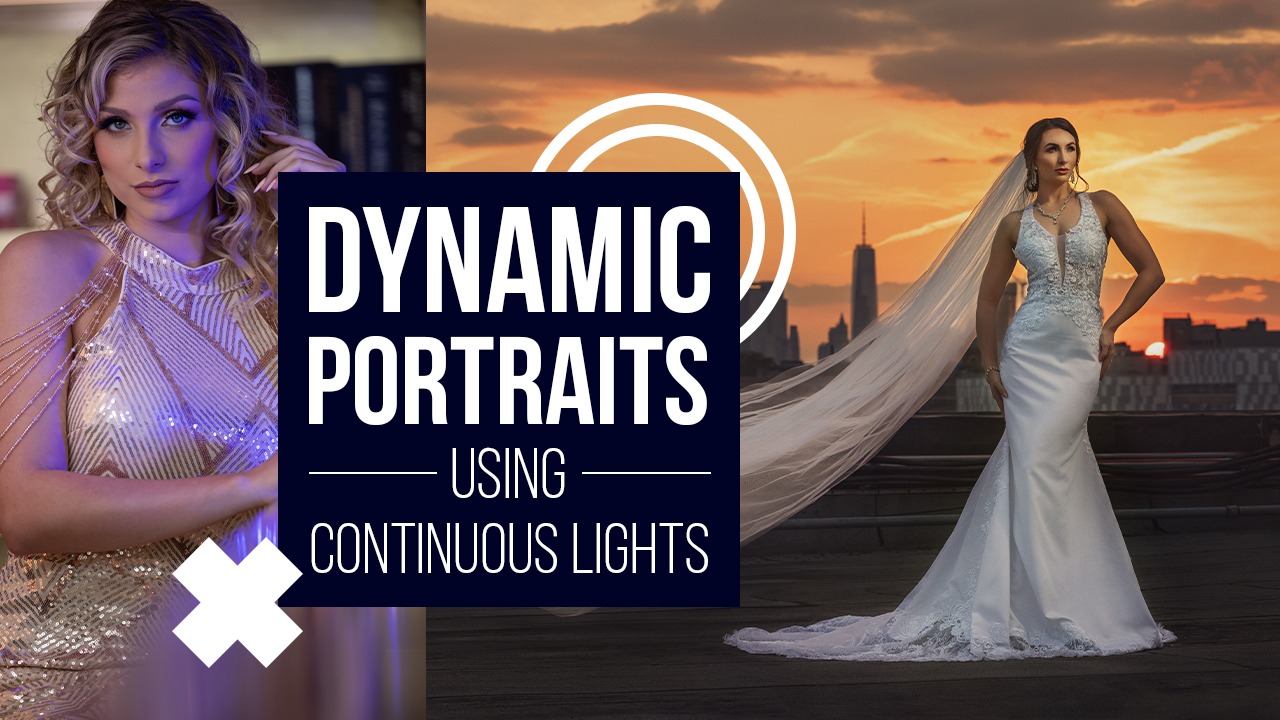Night Photography: Settings and Tips To Get Perfect Exposure with Rey Benasfre
Who loves shooting a session through golden hour and sunset? I know I do! But why stop at sunset, especially now during the winter months when days are shorter? Shooting at night can open up so many more creative possibilities with your camera. To unlock these possibilities it’s important to really know your camera’s exposure settings. But don’t just copy other people’s settings, because at night there are so many specific ways you’ll need to set your camera for each situation.
I know, I know, you were probably hoping I’d just hit you with the perfect go-to settings, but that would be a disservice to you. I want you to understand what each setting does and how to use them for night photography. You might not get it right the first time, but if you understand the basics it will be easier to troubleshoot your way to the perfect exposure for the look you’re going for.
I will explain each of the camera’s basic exposure settings and what they can do night photography. Your settings will depend on what you’re trying to accomplish in your scene. How much grain in your image are you okay with? Are you working with people and are they standing still or moving? Do you want street lights to look like starbursts or do you want light streaks from cars passing by? Are you trying to capture a ton of stars in your photo? Each situation has its own recipe. Understand that the settings in the exposure triangle (shutter speed, aperture, ISO) all work together to create the type of exposure you’re looking for. If you add a lot of one ingredient, you may need to balance it out by adding less of another.
Aperture
The aperture is an adjustable opening in your lens that controls how much light passes through to your camera. This is displayed by an f-number. The lower the f-number the wider that aperture is, and the higher the f-number the more narrow it is. The amount of light passing through the aperture plays a big part in how bright or dark your exposure will be. In addition, the opening of the aperture affects the depth of field around your point of focus. There is a lot of science behind the latter, but just know that with a wider aperture you’ll have a more shallow depth of field than you will with a narrow aperture.
